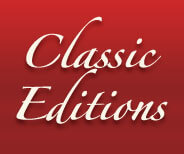Description
Cipher, 2012
Unique Altered Book Sculpture by Raymond Papka
FINE Condition
Sculpture Details: “Cipher” is a mixed media assemblage that consists of an altered book, encaustic paint, text, paper, pigments, metal, and found objects with two secret drawers. The story underlying the “Cipher” altered book is described by Ray Papka as follows:
“I begin each piece of art that I do with a preconceived title so a story unfolds from my mind as the altered book evolves. I have always been intrigued by fonts, text and codes. I decided to undertake this piece of altered book art entitled “Cipher” to uncover for myself some of the mysteries of codes and ciphers... A cipher (or cypher) is an algorithm for performing encryption or decryption—a series of well-defined steps that can be followed as a procedure. To encipher or encode is to convert information from plain text into code or cipher. In non-technical usage, a "cipher" is the same thing as a "code"; however, the concepts are distinct in cryptography. In classical cryptography, ciphers were distinguished from codes. Codes operated by substituting according to a arge codebook (which is represented by the secret mini-codebook in the lower box of the side compartments and the forward print in the middle compartment of the book face) which linked a random string of characters or numbers to a word or phrase. For example, "UQJHSE" could be the code for "Proceed to the following coordinates". When using a cipher the original information is known as plaintext, and the encrypted form as ciphertext. The ciphertext message contains all the information of the plaintext message, but is not in a format readable by a human or computer (which is represented by the coded symbols on the face of the book) without the proper mechanism to decrypt it (which is represented by the deciphering wheels in the top box of the side compartments and the back coding in the middle compartment of the book face).
The operation of a cipher usually depends on a piece of auxiliary information, called a key. The encrypting procedure is varied depending on the key, which changes the detailed operation of the algorithm. A key must be selected before using a cipher to encrypt a message. Without knowledge of the key, it should be difficult, if not nearly impossible, to decrypt the resulting ciphertext into readable plaintext . (which is again represented by the deciphering wheels in the top box of the side compartments and the back coding in the middle compartment of the book face). The lady in the bracket with the highlighted “eagle-eye” represents someone trying to decrypt and message coded by the brown and white letters and symbols from a vintage adding machine. The red décor around the middle compartment of the book face is musical symbols that encode something that is common to us all --- sounds that are pleasant to our ears and can be decoded by anyone who reads music.
Cryptography dates back to 1900 B.C. with Julius Caesar and the cipher wheel (which is represented by the wheel structures at the top of the book). One rotates the wheel a certain number of spaces to match one letter (on the outside) to a different letter to correspond to it on the inside. My altered books are embellished with objects to represent hinges and knobs to simulate the idea that they open, whereas in fact they are sealed shut.
The book sculpture measures 11.25” x 9” x 3.5”
About the Artist: Ray Papka creates incredible works of art from old books. His art is mixed media and combines assemblage, encaustic painting, the use of books and wood panels as substrates, and found objects as relevant embellishments. The beeswax of encaustic painting allows him to generate layers of information in his artwork, but keep it mysterious....almost dreamy and historical. He employs found objects to embellish a piece that is reinvented as a retrospective, pleasant and, sometimes, functional piece of art. His art takes many forms, but keeps a theme of changes, of layers, of old, of memories, of looking back and of reutilization. The artwork he produces ranges from subtle or mysterious to bold and brash.
Ray is a self-taught artist. He completed undergraduate studies at the University of Wyoming (B.S. Zoology and Chemistry) and graduate studies at Tulane University (Ph.D. Anatomy and Neuroscience).
Condition Report: The book sculpture is in FINE condition.
A photograph of the book sculpture appears in the photo section of the listing.







